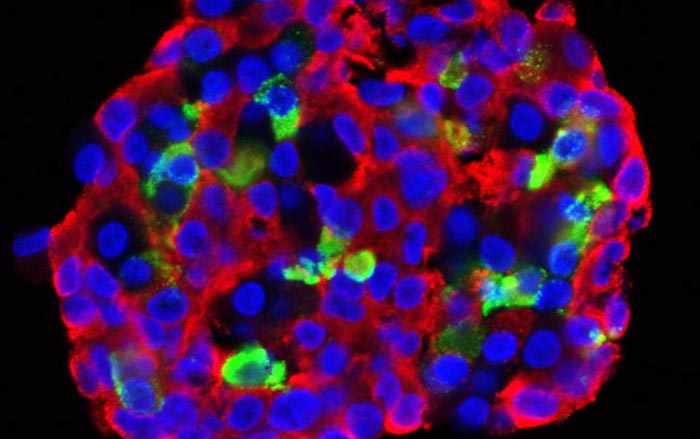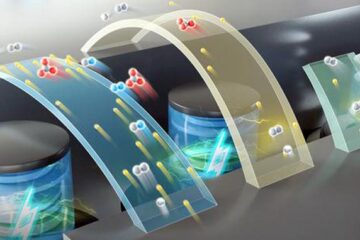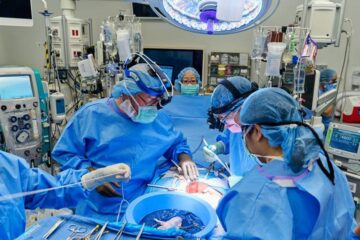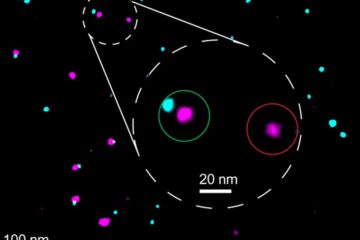Research into insulin-producing cells

This is stem cell-derived pancreatic tissue with insulin depicted in red and glucagon in green.
Credit: UC San Diego Health Sciences
$6 million NIH grant launches UC San Diego consortium to study insulin-producing cells.
Sequencing the human genome — a feat accomplished in 2003 — provided the list of ingredients that make up a human being, but not the instructions that explain how those ingredients are used by each cell type to create complex “meals.” In other words, just because we know the sequence of DNA in a cell, it doesn’t necessarily mean we know how those instructions inform cell function, or how genetic variations influence function and disease risk.
To help bridge the gap between genotype (DNA sequence) and phenotype (cell behavior), the National Human Genome Research Institute, part of the National Institutes of Health, has launched a new Impact of Genomic Variation on Function Consortium.
As part of the new program, University of California San Diego School of Medicine researchers will receive $6.4 million in grant funding to study how external signals and genetic variations influence the behavior of one cell type in particular: insulin-producing beta cells in the pancreas.
“We plan to develop a roadmap of genetic variations, relevant in beta cells, to predict changes in insulin output — important information that may better enable us to prevent and treat diabetes,” said team lead Maike Sander, MD, professor and director of the Pediatric Diabetes Research Center at UC San Diego School of Medicine.
Beta cells produce the hormone insulin in response to increased sugar levels in the blood, as happens after a meal. Insulin helps other cells take up and use sugar for energy.
In type 1 diabetes, a person’s own immune system mistakenly attacks beta cells, so they don’t produce insulin. In type 2 diabetes, beta cells don’t produce enough insulin and other cells stop responding to it. In both cases, high amounts of sugar left to circulate in the blood can damage the circulatory, nervous and other body systems. It’s a careful balance, though — if beta cells produced too much insulin, there would be too little blood sugar left to keep a person alive.
Sander is a physician-scientist specializing in beta cell biology and diabetes. The team of researchers comprises a multidisciplinary group of experts: UC San Diego School of Medicine’s Bing Ren, PhD, professor, director of the Center for Epigenomics and member of the San Diego branch of the Ludwig Institute for Cancer Research (single-cell technologies and epigenomics); Hannah Carter, PhD, associate professor (network modeling); and Kyle Gaulton, PhD, assistant professor (human genetics and genomics).
The team previously built human stem cell-based beta cell models in the lab and genomic maps detailing how various beta cell genes are regulated. They can also use CRISPR gene editing to recapitulate gene variants that may affect insulin production and secretion.
With the new funding, the team will use their beta cell models to detail how external signals determine insulin output. They’ll look at 10 different stimuli known to modify insulin secretion, including sugar, other nutrients and food-dependent hormones, and determine how the beta cell genome and insulin release change in response to those stimuli over various lengths of time.
Media Contact
Heather Buschman
University of California – San Diego
hbuschman@ucsd.edu
Office: 858-249-0456
All latest news from the category: Awards Funding
Newest articles

High-energy-density aqueous battery based on halogen multi-electron transfer
Traditional non-aqueous lithium-ion batteries have a high energy density, but their safety is compromised due to the flammable organic electrolytes they utilize. Aqueous batteries use water as the solvent for…

First-ever combined heart pump and pig kidney transplant
…gives new hope to patient with terminal illness. Surgeons at NYU Langone Health performed the first-ever combined mechanical heart pump and gene-edited pig kidney transplant surgery in a 54-year-old woman…

Biophysics: Testing how well biomarkers work
LMU researchers have developed a method to determine how reliably target proteins can be labeled using super-resolution fluorescence microscopy. Modern microscopy techniques make it possible to examine the inner workings…





















